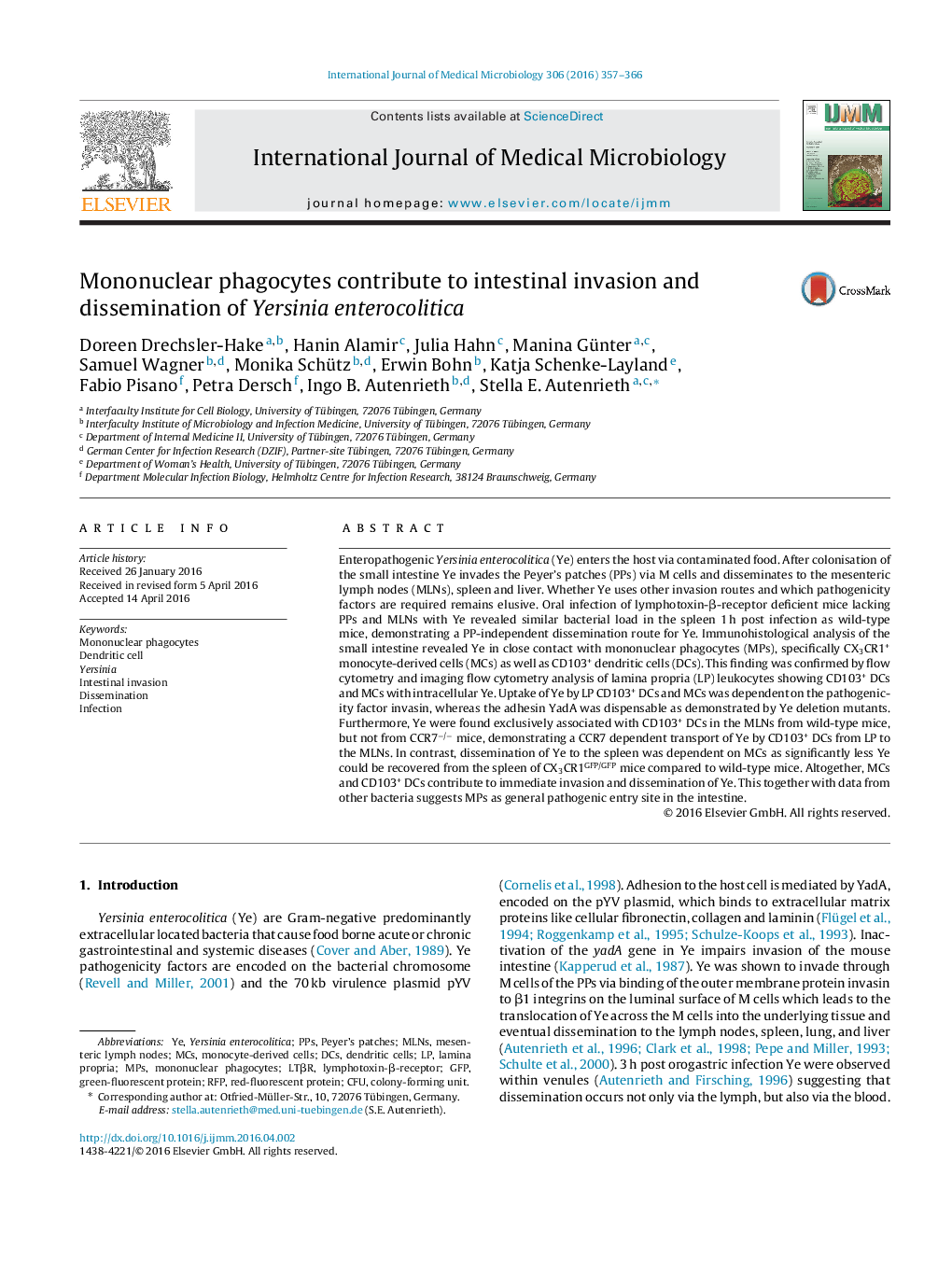| Article ID | Journal | Published Year | Pages | File Type |
|---|---|---|---|---|
| 5517768 | International Journal of Medical Microbiology | 2016 | 10 Pages |
Enteropathogenic Yersinia enterocolitica (Ye) enters the host via contaminated food. After colonisation of the small intestine Ye invades the Peyer's patches (PPs) via M cells and disseminates to the mesenteric lymph nodes (MLNs), spleen and liver. Whether Ye uses other invasion routes and which pathogenicity factors are required remains elusive. Oral infection of lymphotoxin-β-receptor deficient mice lacking PPs and MLNs with Ye revealed similar bacterial load in the spleen 1 h post infection as wild-type mice, demonstrating a PP-independent dissemination route for Ye. Immunohistological analysis of the small intestine revealed Ye in close contact with mononuclear phagocytes (MPs), specifically CX3CR1+ monocyte-derived cells (MCs) as well as CD103+ dendritic cells (DCs). This finding was confirmed by flow cytometry and imaging flow cytometry analysis of lamina propria (LP) leukocytes showing CD103+ DCs and MCs with intracellular Ye. Uptake of Ye by LP CD103+ DCs and MCs was dependent on the pathogenicity factor invasin, whereas the adhesin YadA was dispensable as demonstrated by Ye deletion mutants. Furthermore, Ye were found exclusively associated with CD103+ DCs in the MLNs from wild-type mice, but not from CCR7â/â mice, demonstrating a CCR7 dependent transport of Ye by CD103+ DCs from LP to the MLNs. In contrast, dissemination of Ye to the spleen was dependent on MCs as significantly less Ye could be recovered from the spleen of CX3CR1GFP/GFP mice compared to wild-type mice. Altogether, MCs and CD103+ DCs contribute to immediate invasion and dissemination of Ye. This together with data from other bacteria suggests MPs as general pathogenic entry site in the intestine.
